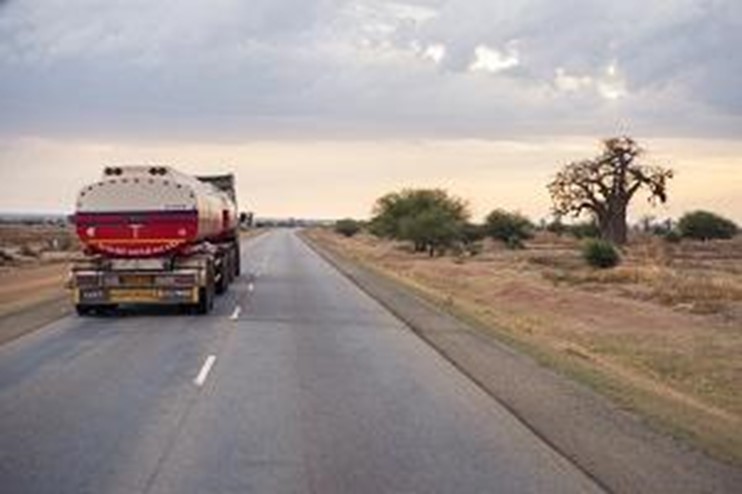
Far too many accidents involving the transport of dangerous goods still occur in countries all around the world. In November 2021, close to 100 people were reported to have died from a blast following a crash between a tank vehicle and a truck in a busy commercial district of Freetown, Sierra Leone.
Other major incidents among those recorded every year include the 2019 explosions of an overturned petrol tank vehicle in Niamey, Niger, which killed 58 people, and tank vehicle explosion in Yangchen, China, responsible for 68 deaths, or the 2017 fuel tank vehicle blast in Pakistan that claimed over 200 lives.
UNECE is ready to support all countries to implement proven United Nations instruments to prevent such accidents from occurring and to reduce the severity of their consequences.
For 75 years, UNECE has provided an intergovernmental platform where countries around the world come together to forge tools for economic cooperation, and negotiate and adopt UN conventions and recommendations on inland transport and elaborate updates and implementation of the conventions. The 59 UN conventions are considered indispensable for developing safe, efficient and sustainable inland transport systems. Among them, seven conventions provide legal frameworks that build safer roads and safer vehicle, safe handling of dangerous goods and ensure that we have safer drivers and safe road users. The Agreement concerning the International Transport of Dangerous Goods by Road (ADR) is one of these seven UN conventions to improve global road safety.
UN General Assembly resolutions over the years have consistently encouraged UN Member States to accede to all of the UN road safety legal instruments, and beyond accession, to implement and apply their provisions or safety regulations. Following the recent accession by Uganda in August 2022, the number of contracting parties to ADR increased to 54, mainly from the UNECE region but also from Asia and the Pacific (4) and Africa (4).26
26 The detailed list of ADR contracting parties is available at the United Nations Treaty Collection.
The Agreement concerning the International Transport of Dangerous Goods by Road (ADR) is a proven best practice United Nations instrument that has helped ensure the safe transport of hazardous substances for over 50 years. Incidents involving ADR vehicles carrying dangerous goods often result in no or minimum spillage, no or few people injured and even in many cases no significant damage to the cargo, people or the environment.
According to ADR, reports on serious accidents or incidents need to be notified by the Contracting Parties.27 On the contrary, accidents involving vehicles not complying with ADR requirements often have catastrophic consequences as mentioned above.
27 See Accident reports (notifications according to 1.8.5.2) at the UNECE website.
ADR offers a key practical tool that covers the classification, packaging and labelling of dangerous goods and the construction and equipment of the vehicles carrying them, including detailed training provisions of personnel involved in the transport operations of dangerous goods, for instance, drivers, vehicle crew and safety advisers. ADR helps to ensure safe transport – within countries and across borders – of a wide range of hazardous products including petroleum products, gases, chemicals, agrochemicals and fertilizers. More detailed information on the accession and implementation of ADR can be found in the ADR road map (UNECE 2022).28
28 UNECE (2022). Road map for accession to and implementation of the Agreement Concerning the International Carriage of Dangerous Goods by Road (ADR). Geneva: United Nations.
Harmonization of transport of dangerous goods regulations across all transport modes (maritime, air, rail, road and inland waterways) is most important and started more than 60 years ago with the creation of a group of experts under the auspices of the United Nations Economic and Social Council (ECOSOC). The Sub-Committee of Experts on the Transport of Dangerous Goods is responsible for the development of provisions ensuring harmonization and safe transport of dangerous goods by all modes. Its “Recommendations on the Transport of Dangerous Goods, Model Regulations”, commonly known as the “orange book”, are implemented at worldwide level by all modes of transport, through the applicable international legal instruments (i.e. IMDG Code, ICAO Technical Instructions, RID, ADR, ADN) or through national or regional legislation. The implementation of the Model Regulations is crucial to ensure a safe transport of dangerous goods by all modes.29
The approaches of circular economy and the sustainable use of natural resources are important to achieve the Sustainable Development Goals (SDGs) of the 2030 Agenda. The UNECE Sustainable Transport Division is servicing on a regular basis the sessions of the ECOSOC Committee of Experts on the Transport of Dangerous Goods and on the Globally Harmonized System of Classification and Labelling of Chemicals (TDG-GHS) and its subcommittees that also made important recommendations in these areas.
The contributions included among other updated model recommendations.30
for the use of recycled plastics material to produce dangerous goods packaging (SDG 12)
for the safe transport of electric storage systems, such as lithium ion and sodium ion batteries, and cleaner or alternative low-carbon fuels (SDGs 7, 12 and 13)
simplifying the provisions for the transport of nitrocellulose membrane filters to facilitate their availability for COVID-19 rapid test devices worldwide (SDGs 3 and 8)
to facilitate classification using non-animal testing methods (SDGs 8 and 15)
to improve hazard communication (SDGs 8 and 12)
extending the scope to cover other chemicals of concern due to their health or environmental hazards (SDGs 12 and 14)
30 Further details are available at the UNECE website.